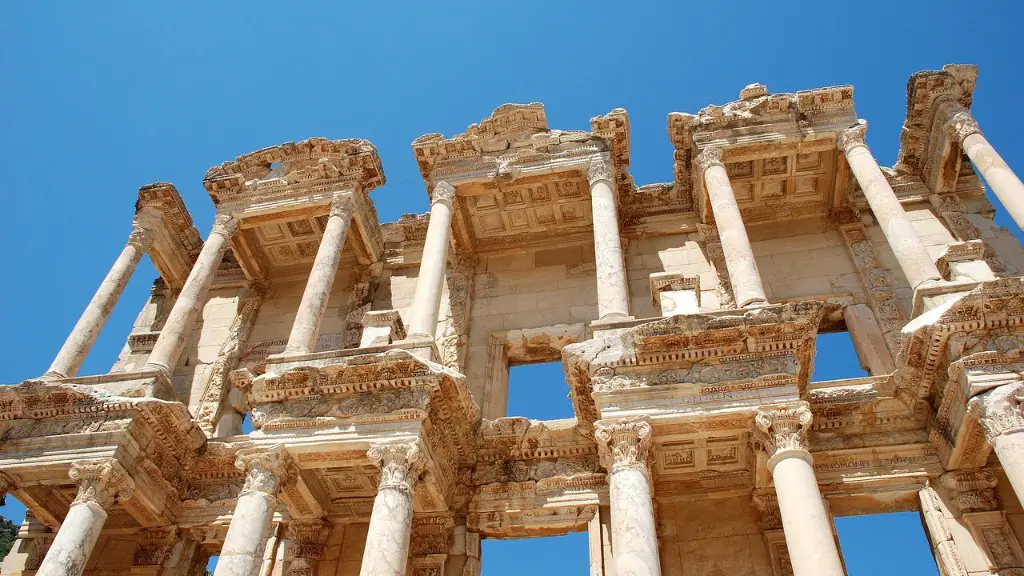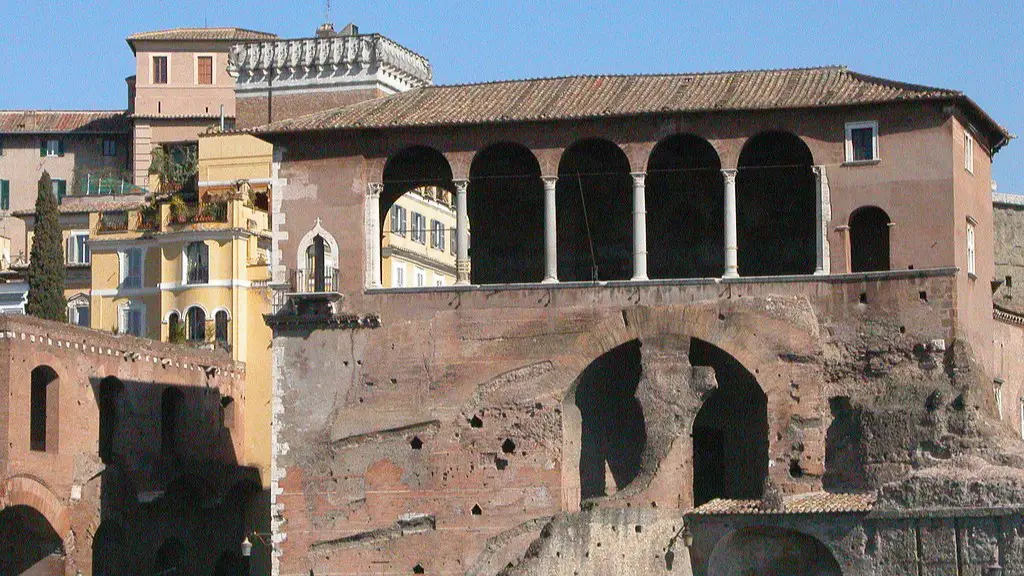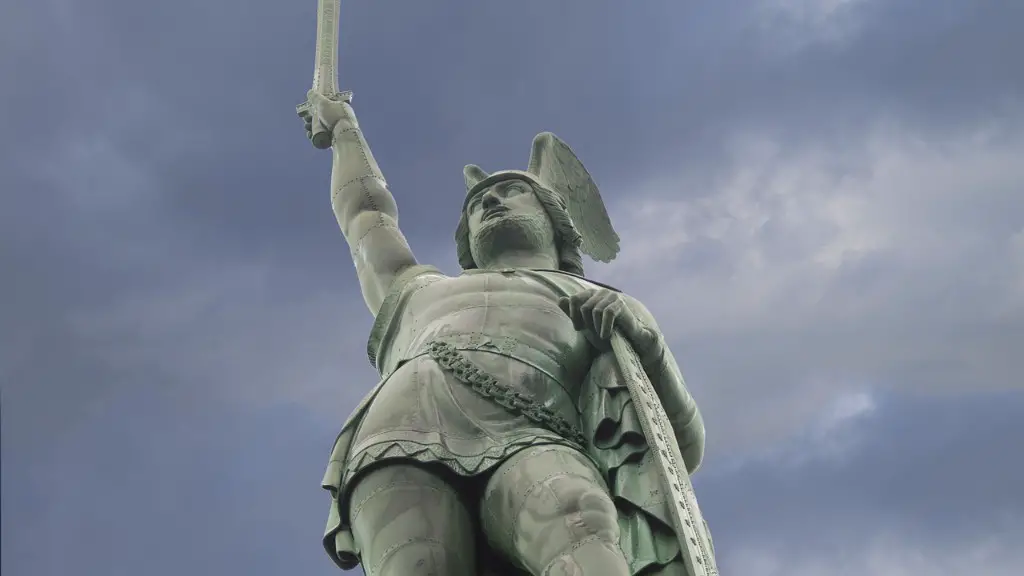Introduction
Ancient Rome was one of the most influential civilizations in Western history. Founded in 753 BC, Ancient Rome was the primary superpower in the Mediterranean world and had the distinction of being the only superpower in the world until it fell in 476 AD. It is credited with the introduction of systems like the republic and elected leaders, development of a legal system and a shift towards patronage and patronage-based systems of governance, and the rise of imperialism. It is also credited with the popularization of many forms of art, literature, philosophy, and architecture. As many historians, scholars, and archaeologists have explored and studied this influential civilization, it is important to note why ancient Rome was such a desirable place to live prior to its fall.
Geographical Location
Ancient Rome was located in what is modern-day Italy, and it was strategically placed at the intersection of the Mediterranean Sea and the Apian Mountains. This provided Rome with many natural defenses, as well as access to the rest of the Mediterranean world, from the northern shores of Italy to the Middle East. Consequently, Rome served as the center for trade, travel, and commerce for a vast region. This positioning put Rome at the center of an interconnected network of people, goods, beliefs, and ideas. The city’s location at such a hub of cultural exchange allowed for it to prosper.
Aqueducts
The ancient Romans were renowned engineers who built the aqueducts, a system of canals and bridges that transported fresh water into the city. This allowed access to fresh drinking water and hydration, but also enabled the development of public baths, fountains, and other leisure centers. The aqueducts also connected the outlying areas of Rome to the capital, thus creating a greater sense of unity in the Roman people. The aqueducts increased the potential of the Romans to grow crops and have access to potable water, and also elevated the citizens’ quality of life.
Security
Rome was also a safe city. Its strong military presence and the organized government provided security and safety for the citizens and visitors of Rome. People were able to go about their daily lives without fear of having their property stolen or being in physical harm. The elaborate road system also allowed Roman citizens to travel great distances within the Roman Empire under the protection of the military. The Roman central government had the ability to police and keep order in much of the Mediterranean world, cementing Rome’s control and solidifying its position as a leading power in the world.
Culture and Values
Rome had a culture that was diverse and full of activity. With access to different cultures, Rome was a ripe area for the cultivation of musical and theatrical performances, philosophical and religious thinking, as well as art and literature. Ancient Rome also had a strong emphasis on values such as bravery and family. These values were important in Rome, and developed the culture of passion, hard work, and commitment to a cause.
Education System
One of the reasons why Ancient Rome was a desirable place to live was the quality of its educational system. It was based on the Athenian system, but was far more advanced. Rome was home to some of the best schools and universities of the time, with an emphasis on independent study and learning. Furthermore, Rome offered many public libraries and held public readings and lectures on philosophical, political, and religious topics, which gave citizens an opportunity to stay informed and educated in a variety of subjects.
Job Opportunities
Ancient Rome offered many job opportunities to its citizens and those in the surrounding areas. During its peak, Rome was one of the most prosperous cities in the world and offered trade, manufacturing, and service based jobs. People were able to use their skills and knowledge to their advantage, that was unmatched by any other city in the world. This gave people an opportunity to make money, gain wealth, and work to better their own lives and the lives of their families.
Conclusion
Overall, Ancient Rome was an advanced and prosperous cities for its time, offering its citizens a variety of opportunities and comforts. With its geographical location, infrastructure, security, educational system, and job opportunities, Ancient Rome offered something that other cities of its time could not: a safe, diverse and fulfilling experience of life.
Economics
Ancient Rome had a strong and organized economy. They had a complex taxation system, which was eventually adopted by other cities and regions. Rome also had a well-developed financial system, which allowed for efficient and secure banking and trading. The money itself was standardized, making it easy to use in different places and between different people. Rome had its own currency and coins, and people could buy, sell, and trade goods with relative ease.
Political Structure
Ancient Rome had a unique structure of government that allowed for a more equal representation of its diverse population. The government was based on a Senate and a complex network of laws and regulations that were regularly updated to match the changing needs of the Roman people. This kept the government organized, accountable to its citizens, and allowed for the protection of individual freedoms.
Modern Influences
Ancient Rome’s influence can still be felt in modern day life. Many of the legal systems, governments, and ideologies that we use today were based on the model and systems developed by the Romans. The political and economic structure, the trading systems, the foundation of the justice system, and even the Latin language, have all been adopted and adapted into modern life. Rome’s influence can even be seen in the modern-day flags of Italy and the European Union.
Architecture
Rome also had a unique system of architecture that continues to influence the world today. Its buildings were impressive, strong, and filled with symbolism and meaning. Its sophisticated and complex structures, such as the Colosseum, the Forum, and the Pantheon, are admired by modern day architects and engineers. Through these iconic structures, the Romans were able to demonstrate their power, wealth, and skill.



